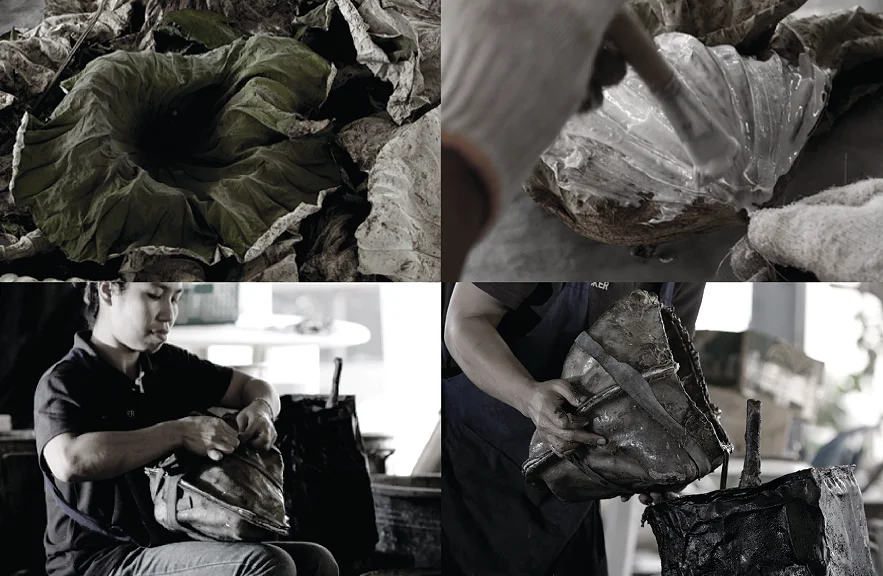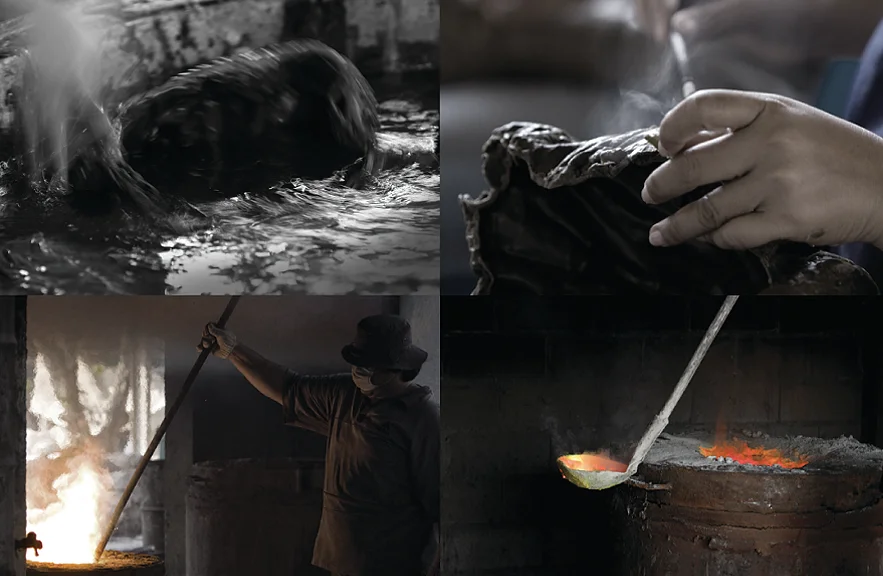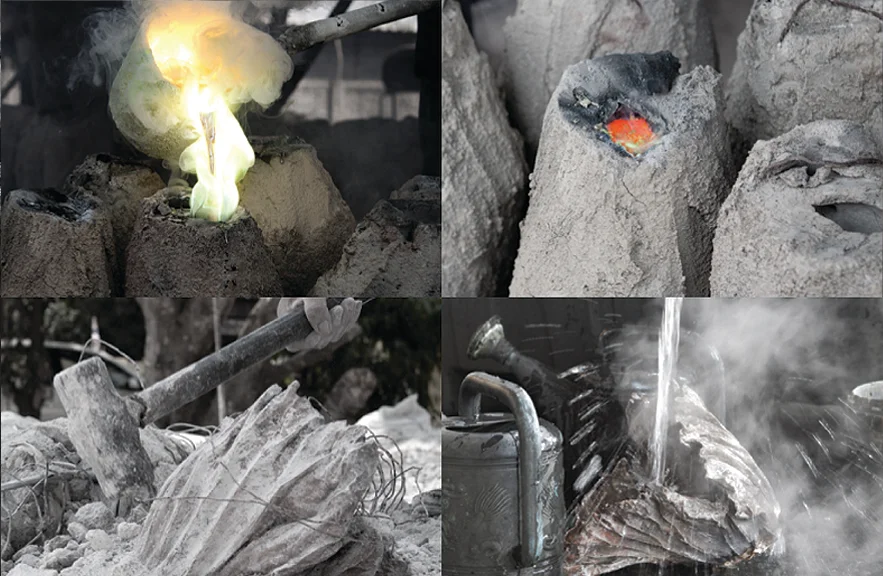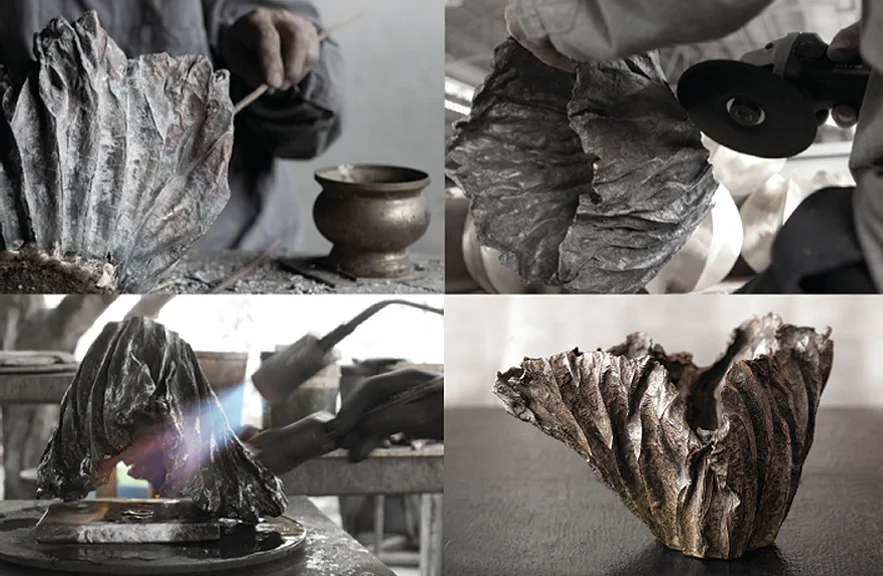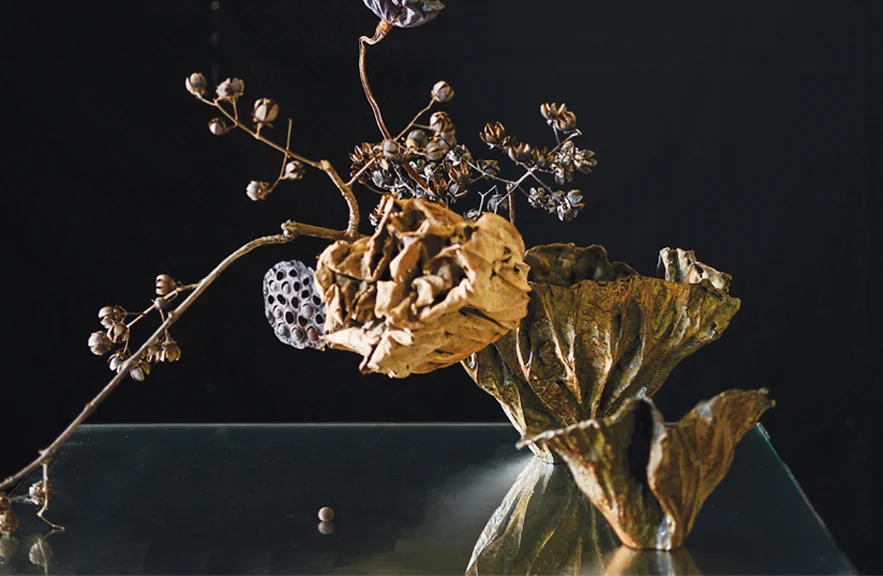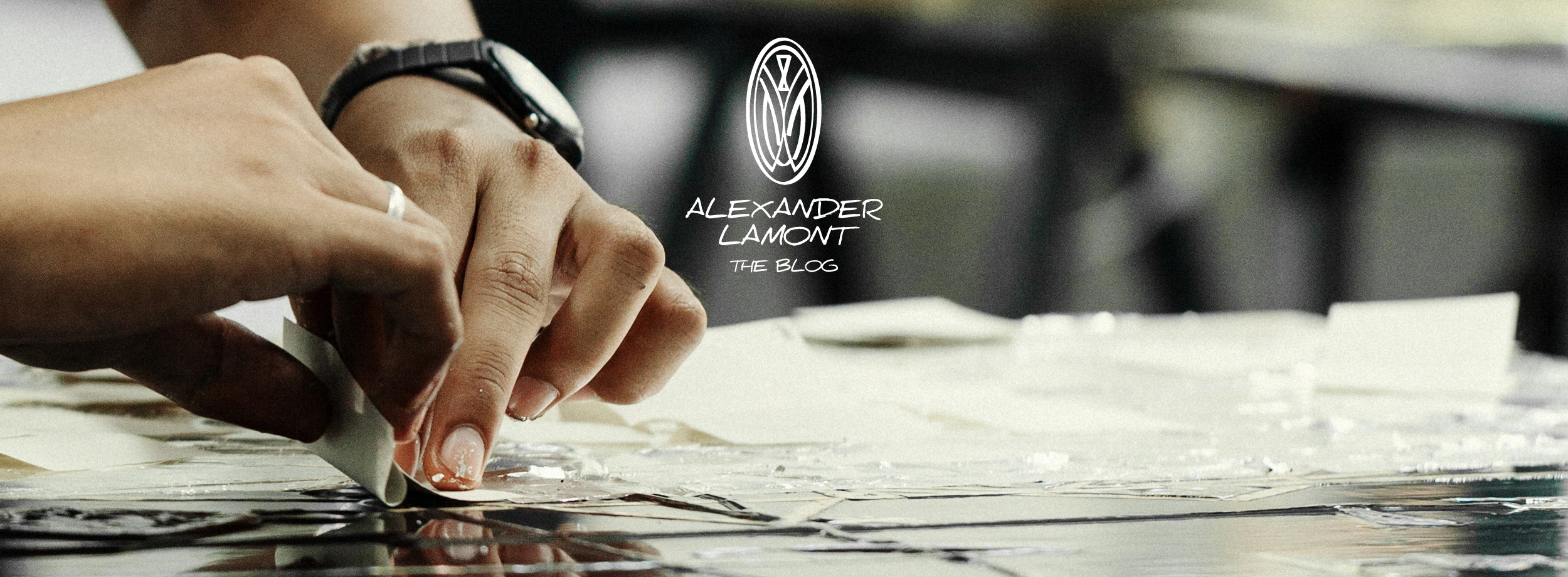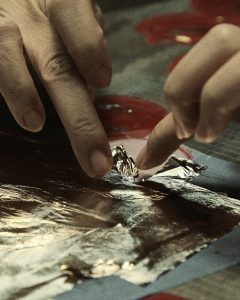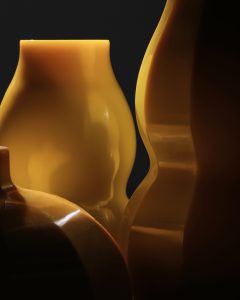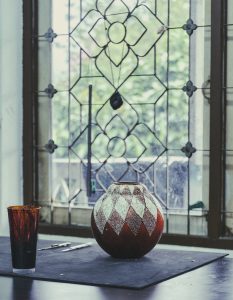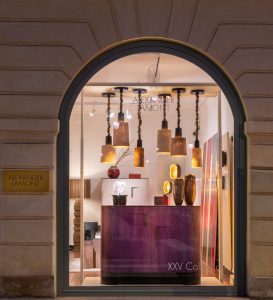This week I have something different for you, a short story. It’s about the life and death and rebirth of a lotus leaf.
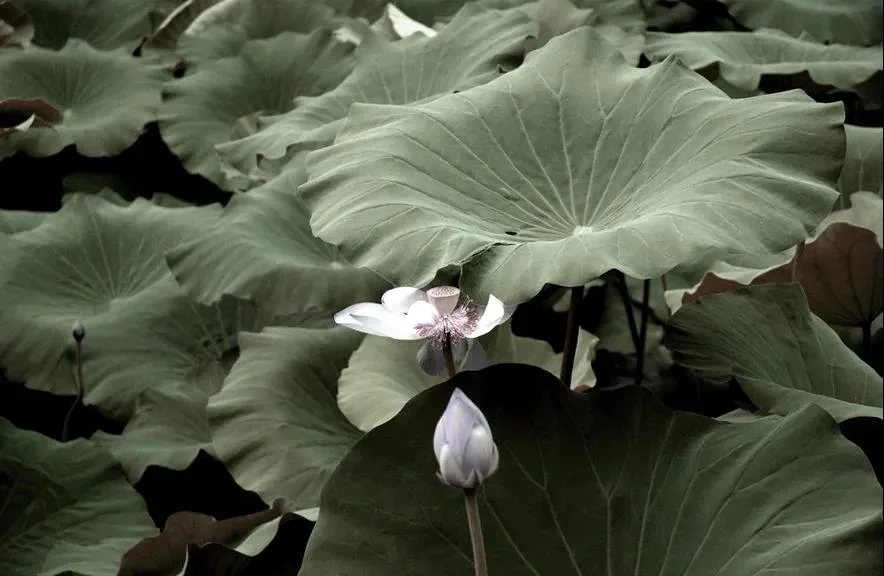
There was once a lotus leaf that found its roots in a wide pond some hours from the Thai capital. The pond was cool and many fish swam around its roots making the water ripple gently as it does all over Thailand when the fish swim and the breezes blow. The leaf was broad and strong and decorated in a myriad of strong veins. When it rained the leaf would catch rainwater, the drops rolling like mercury down to its centre, cooling the leaf. It stood on a stalk that lifted it above the green waters, and every day its handsome round patterned face followed the sun from its red rising to its white-hot zenith to its beautiful sad farewell. All around the leaf were other lotus leaves, and many of the famous lotus flowers so adored by the Lord Buddha and his followers for their delicate, sculptural grace and perfection.
Everyday, a small boat would paddle out to the pond and people would select flowers and leaves for the markets of Bangkok. Lotus leaves are used for food and for beautiful wrappings in Thailand and the flowers are presented to altars by people wishing to honour the life of the Buddha or praying for improved fortunes. Imagine how surprised our leaf was shortly after being lifted from the pond, to find himself not bumping along in a van towards the capital, but rather being laid out gently in the sun with some other leaves in the open area of a small bronze foundry. The leaves were gently shaped as they dried by a pair of English hands. Our leaf died in the appreciative hands of this stranger and so entered another life – as it is believed in these lands. Things happened very fast at this point.
The fragile, delicate, beautiful form of the leaf was painted with a fine rubber to catch the details of its surface and shape. The rubber was used as a mold to make a wax model. The wax model was carefully washed, fixed and checked and then covered with clay. The clay was heated so the wax would drain out leaving a cavity deep inside it – a space that held all the details of the leaf; a negative of the leaf. A huge crucible full of molten bronze was heated to 1200 degrees celsius and the bright liquid metal was poured into the leaf-shaped space within the clay, filling all the spaces; the veins and face of the leaf. After cooling the mold was broken open, revealing a somewhat rough bronze version of the leaf covered with flashings and sprues (vents that let the bronze flow). The bronze leaf was washed, ground, chased (which means various tools were used to clean and detail the metal) and a base was added using a solder. Once it was perfectly ready, the unfinished bronze leaf was heated with a flame torch, and a hard bristled brush spotted with special acids worked with the flame to build up a beautiful change to the surface. The light yellow of the metal became a rich, deep, varying patina that, once waxed, brought out the wonderful veins and fine shape of the leaf that had once been green and soft.
And so the strong leaf from the lotus pond gave its life to the creation of a vessel that will live on as a gorgeous statement of the life of that leaf and the life of the hands that worked it.
